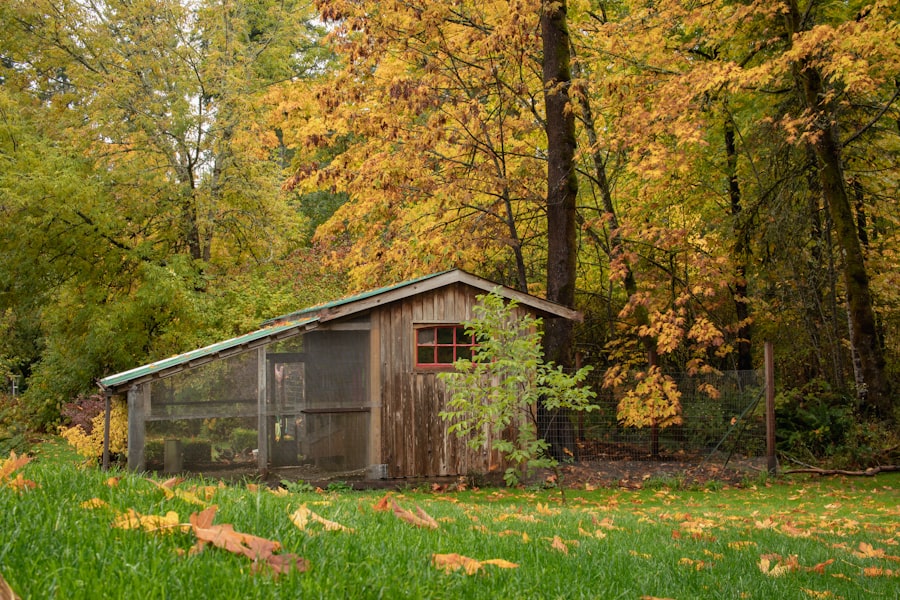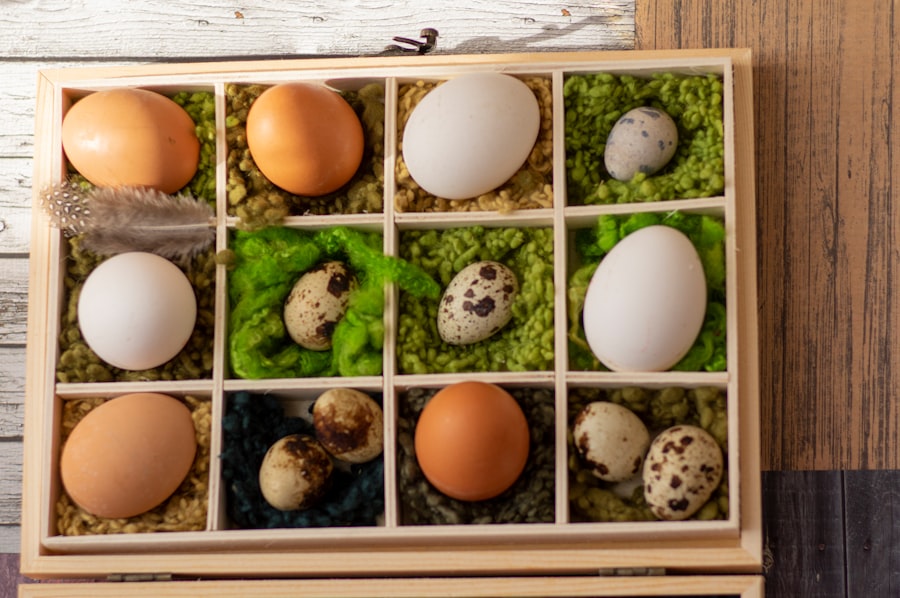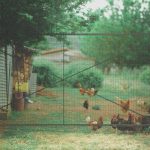Stoats, also known as short-tailed weasels, are small carnivorous mammals that present a significant threat to chickens and other small livestock. These agile predators are adept hunters, capable of squeezing through small openings and attacking unsuspecting birds. Stoats are known for their ability to kill multiple chickens in a single incident, often causing extensive damage.
Their slender bodies and sharp teeth make them formidable predators, as they can easily access chicken coops and cause substantial harm to the flock. Chickens are domesticated birds that are particularly vulnerable to stoat attacks. They are commonly kept in coops or allowed to roam in free-range environments, making them accessible targets for stoats seeking prey.
Chickens are valued not only for their eggs and meat but also for their companionship and entertainment value to their owners. Consequently, protecting chickens from stoat attacks is crucial for poultry keepers. Recognizing the danger that stoats pose to chickens is essential for implementing effective preventive measures and safeguards to ensure the safety of these birds.
Table of Contents
- 1 Securing the Chicken Coop: Physical Barriers
- 2 Implementing Natural Deterrents: Predator Urine and Plants
- 3 Utilizing Electronic Deterrents: Motion-Activated Devices
- 4 Maintaining a Tidy Environment: Removing Attractants
- 5 Monitoring and Surveillance: Regular Checks and Security Cameras
- 6 Seeking Professional Help: Consulting with Wildlife Experts
- 7 FAQs
Key Takeaways
- Stoats pose a threat to chickens as they are known to prey on them
- Physical barriers such as wire mesh can help secure the chicken coop from stoat attacks
- Predator urine and certain plants can act as natural deterrents for stoats
- Motion-activated devices can be used to deter stoats from approaching the chicken coop
- Removing food sources and keeping the environment tidy can help reduce the risk of stoat attacks on chickens
- Regular checks and the use of security cameras can help monitor and prevent stoat attacks on the chicken coop
- Consulting with wildlife experts can provide valuable insights and assistance in dealing with stoat threats to chickens
Securing the Chicken Coop: Physical Barriers
Securing the Coop with Physical Barriers
One of the most effective ways to protect chickens from stoat attacks is by securing the chicken coop with physical barriers. This can include reinforcing the coop with sturdy wire mesh, ensuring that there are no gaps or holes that stoats can squeeze through. Additionally, installing predator-proof locks on doors and windows can help prevent stoats from gaining access to the coop.
Regular Inspection and Maintenance
It’s important to regularly inspect the coop for any signs of wear and tear, as stoats are adept at finding weak points in the structure.
Underground Fencing: An Added Layer of Protection
Another physical barrier that can be effective in deterring stoats is the use of underground fencing. By burying wire mesh around the perimeter of the coop, chicken owners can prevent stoats from digging their way into the enclosure. This added layer of protection can significantly reduce the risk of stoat attacks and provide peace of mind for chicken owners. In combination with other deterrent methods, securing the chicken coop with physical barriers is an essential step in safeguarding chickens from stoat predation.
Implementing Natural Deterrents: Predator Urine and Plants

In addition to physical barriers, natural deterrents can also be effective in deterring stoats from targeting chickens. One such deterrent is predator urine, which can be purchased from wildlife supply stores or online retailers. By strategically placing predator urine around the perimeter of the chicken coop, chicken owners can create a scent barrier that signals to stoats that the area is inhabited by larger predators.
This can help deter stoats from approaching the coop and reduce the likelihood of an attack. Another natural deterrent that can be used to protect chickens from stoats is the strategic planting of certain plants. For example, lavender and marigold are known for their strong scents, which can help mask the scent of chickens and deter stoats from approaching the coop.
Additionally, planting thorny bushes or shrubs around the perimeter of the coop can create a physical barrier that makes it more difficult for stoats to access the area. By implementing natural deterrents such as predator urine and strategically planting certain plants, chicken owners can create an environment that is less attractive to stoats and reduce the risk of predation.
Utilizing Electronic Deterrents: Motion-Activated Devices
Electronic deterrents can also be effective in deterring stoats from targeting chickens. Motion-activated devices, such as lights and sound emitters, can startle stoats and discourage them from approaching the chicken coop. These devices can be strategically placed around the perimeter of the coop to create a deterrent zone that alerts chicken owners to any potential threats.
Additionally, some motion-activated devices emit high-frequency sounds that are unpleasant to stoats, further deterring them from entering the area. Another electronic deterrent that can be effective in protecting chickens from stoat attacks is the use of electric fencing. By installing electric fencing around the perimeter of the coop, chicken owners can create a barrier that delivers a mild electric shock to any animal that comes into contact with it.
This can effectively deter stoats and other predators from attempting to breach the enclosure, providing an added layer of protection for the flock. By utilizing electronic deterrents such as motion-activated devices and electric fencing, chicken owners can create a safe and secure environment for their birds.
Maintaining a Tidy Environment: Removing Attractants
Maintaining a tidy environment around the chicken coop is essential in reducing the risk of stoat attacks. Stoats are attracted to areas with abundant food sources, so it’s important to remove any potential attractants that may draw them to the area. This can include keeping food scraps and spilled feed cleaned up, as well as securing garbage bins to prevent access by scavenging animals.
Additionally, keeping the area around the coop free of clutter and debris can reduce hiding spots for stoats and make it easier to spot any potential threats. Another important aspect of maintaining a tidy environment is proper waste management. Chicken owners should regularly clean out the coop and remove any soiled bedding or droppings, as these can attract stoats looking for an easy meal.
By keeping the area clean and free of attractants, chicken owners can reduce the likelihood of stoat attacks and create a less appealing environment for these predators.
Monitoring and Surveillance: Regular Checks and Security Cameras

Detecting Stoat Activity
Chicken owners should conduct regular checks of the coop and its surroundings to look for signs of stoat activity, such as tracks or droppings.
Surveillance Measures
Installing security cameras around the perimeter of the coop can provide continuous monitoring of the area and alert chicken owners to any potential threats in real time. In addition to security cameras, motion-activated lights can also be effective in alerting chicken owners to potential threats during nighttime hours.
Proactive Protection
These lights can startle stoats and other predators, making them think twice before attempting to approach the coop. By implementing regular checks and surveillance measures such as security cameras and motion-activated lights, chicken owners can stay vigilant against potential stoat attacks and take proactive measures to protect their flock.
Seeking Professional Help: Consulting with Wildlife Experts
In some cases, dealing with stoat predation may require professional assistance from wildlife experts or pest control professionals. These individuals have specialized knowledge and experience in dealing with predator threats and can provide valuable insights and recommendations for protecting chickens from stoat attacks. Wildlife experts can conduct thorough assessments of the area and recommend specific deterrent methods based on the unique circumstances of each chicken owner.
Additionally, wildlife experts may be able to provide guidance on humane trapping and relocation methods for stoats that have become a persistent threat to chickens. By seeking professional help, chicken owners can gain access to resources and expertise that can help them effectively manage stoat predation and protect their flock from harm. In conclusion, protecting chickens from stoat attacks requires a multi-faceted approach that includes understanding the threat, securing the chicken coop with physical barriers, implementing natural and electronic deterrents, maintaining a tidy environment, monitoring and surveillance, and seeking professional help when necessary.
By taking proactive measures to safeguard their flock, chicken owners can create a safe and secure environment for their birds and reduce the risk of stoat predation.
If you’re looking for ways to keep stoats away from your chickens, you may also be interested in learning about the Producers Pride Sentinel Chicken Coop. This coop is designed to provide a safe and secure environment for your chickens, helping to protect them from predators like stoats. Check out this article to learn more about how this coop can help keep your chickens safe.
FAQs
What is a stoat?
A stoat is a small, carnivorous mammal belonging to the Mustelidae family, which also includes weasels and ferrets. They are known for their slender body, short legs, and long, bushy tail.
Why do stoats pose a threat to chickens?
Stoats are skilled hunters and are known to prey on small animals, including chickens. They can easily sneak into chicken coops and kill or injure the birds.
How can I keep stoats away from my chickens?
There are several methods to deter stoats from preying on chickens, including securing the chicken coop with strong wire mesh, installing motion-activated lights or sound devices, and using natural repellents such as predator urine or ammonia-soaked rags.
Are there any natural predators of stoats that can help control their population?
Stoats have natural predators such as birds of prey, foxes, and larger carnivorous mammals. Encouraging the presence of these predators in the area can help control the stoat population and reduce the risk to chickens.
What should I do if I spot a stoat near my chicken coop?
If you spot a stoat near your chicken coop, it’s important to take immediate action to protect your birds. Secure the coop, remove any potential food sources for the stoat, and consider contacting local wildlife authorities for assistance.
Meet Walter, the feathered-friend fanatic of Florida! Nestled in the sunshine state, Walter struts through life with his feathered companions, clucking his way to happiness. With a coop that’s fancier than a five-star hotel, he’s the Don Juan of the chicken world. When he’s not teaching his hens to do the cha-cha, you’ll find him in a heated debate with his prized rooster, Sir Clucks-a-Lot. Walter’s poultry passion is no yolk; he’s the sunny-side-up guy you never knew you needed in your flock of friends!







